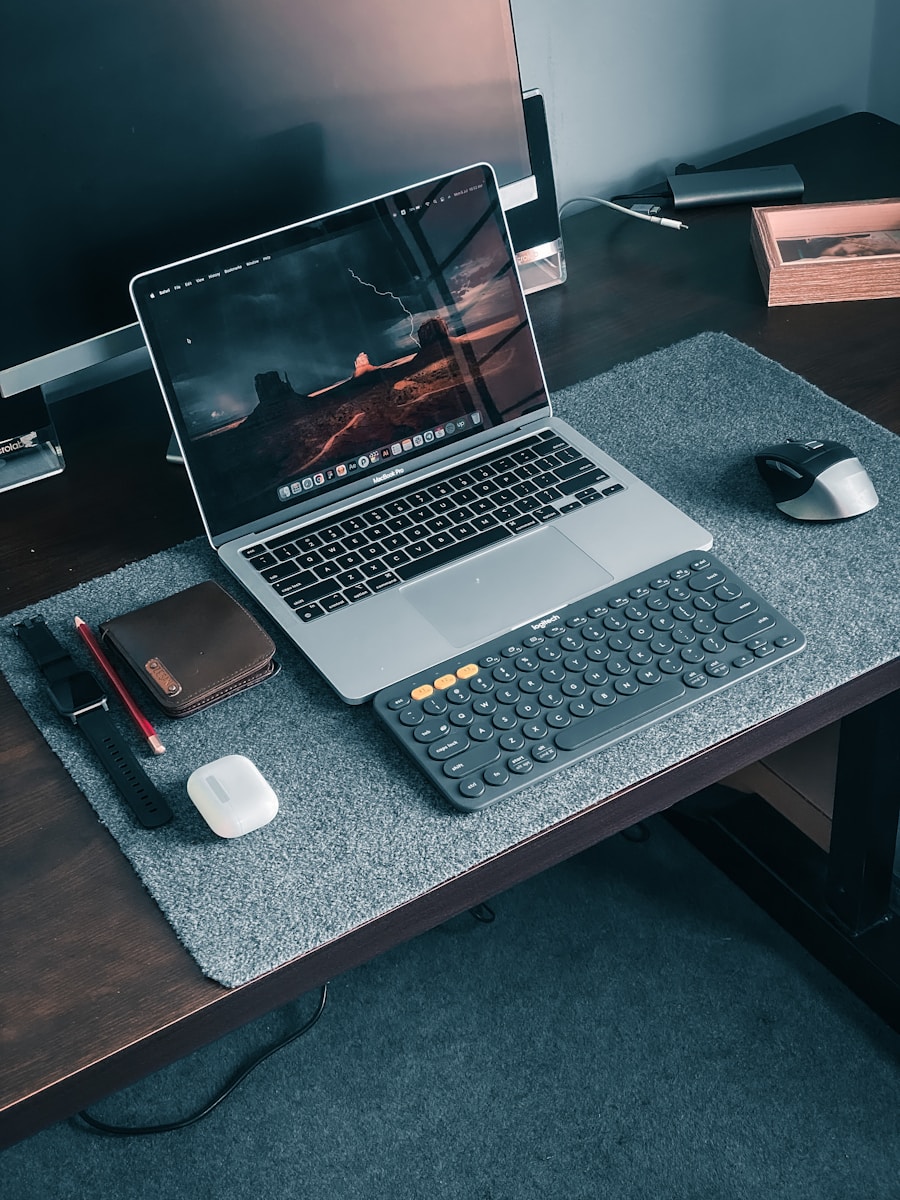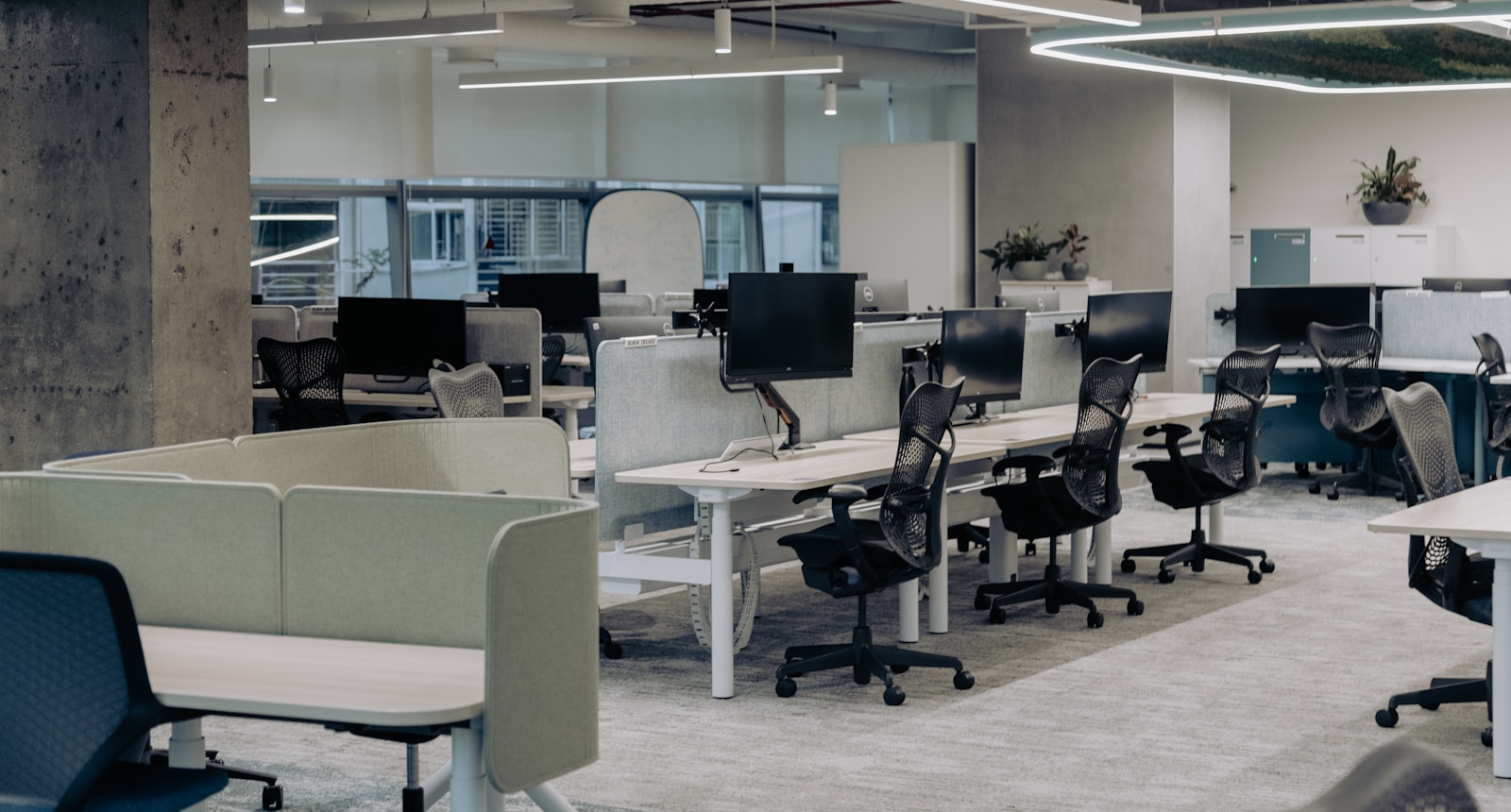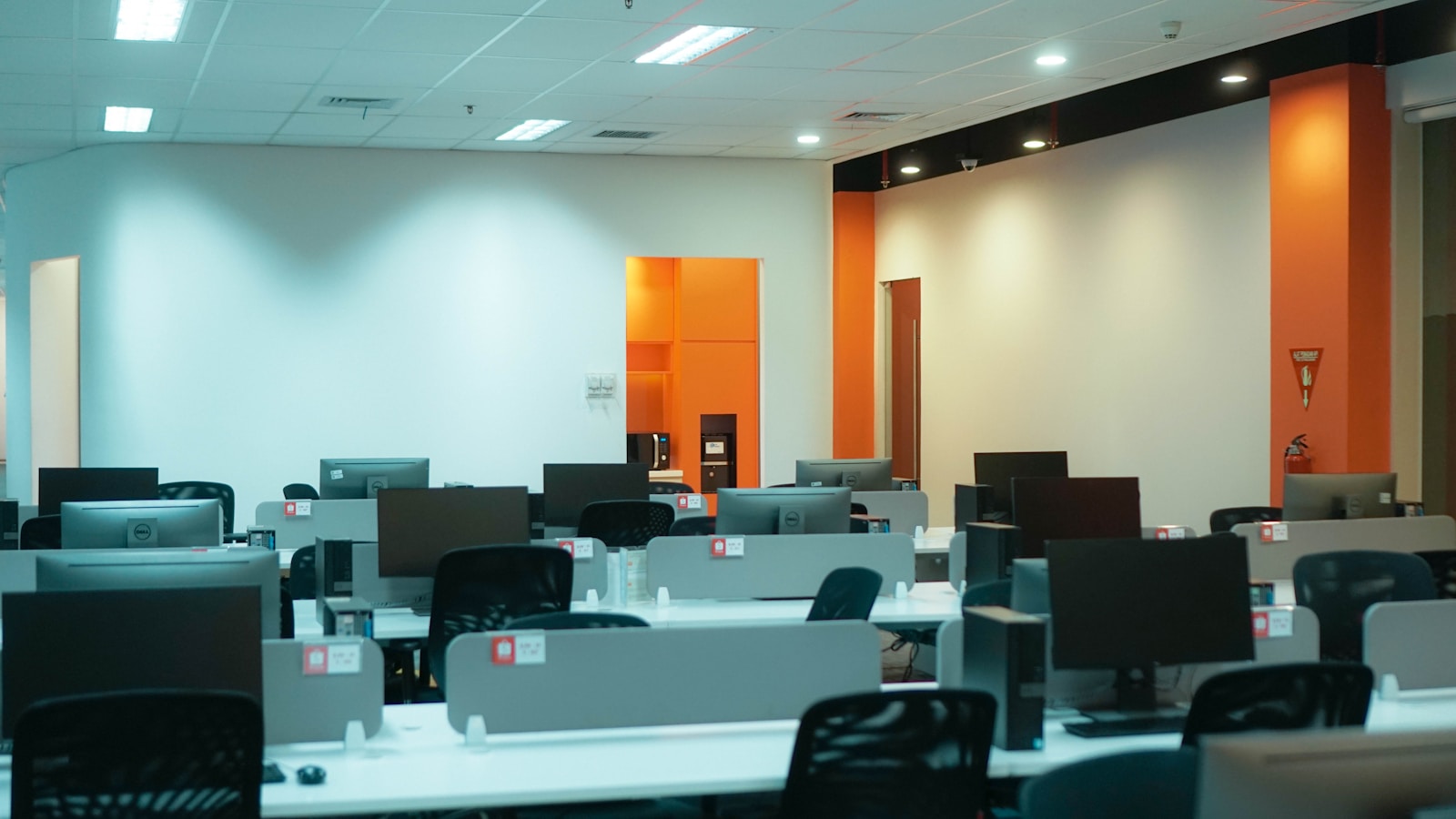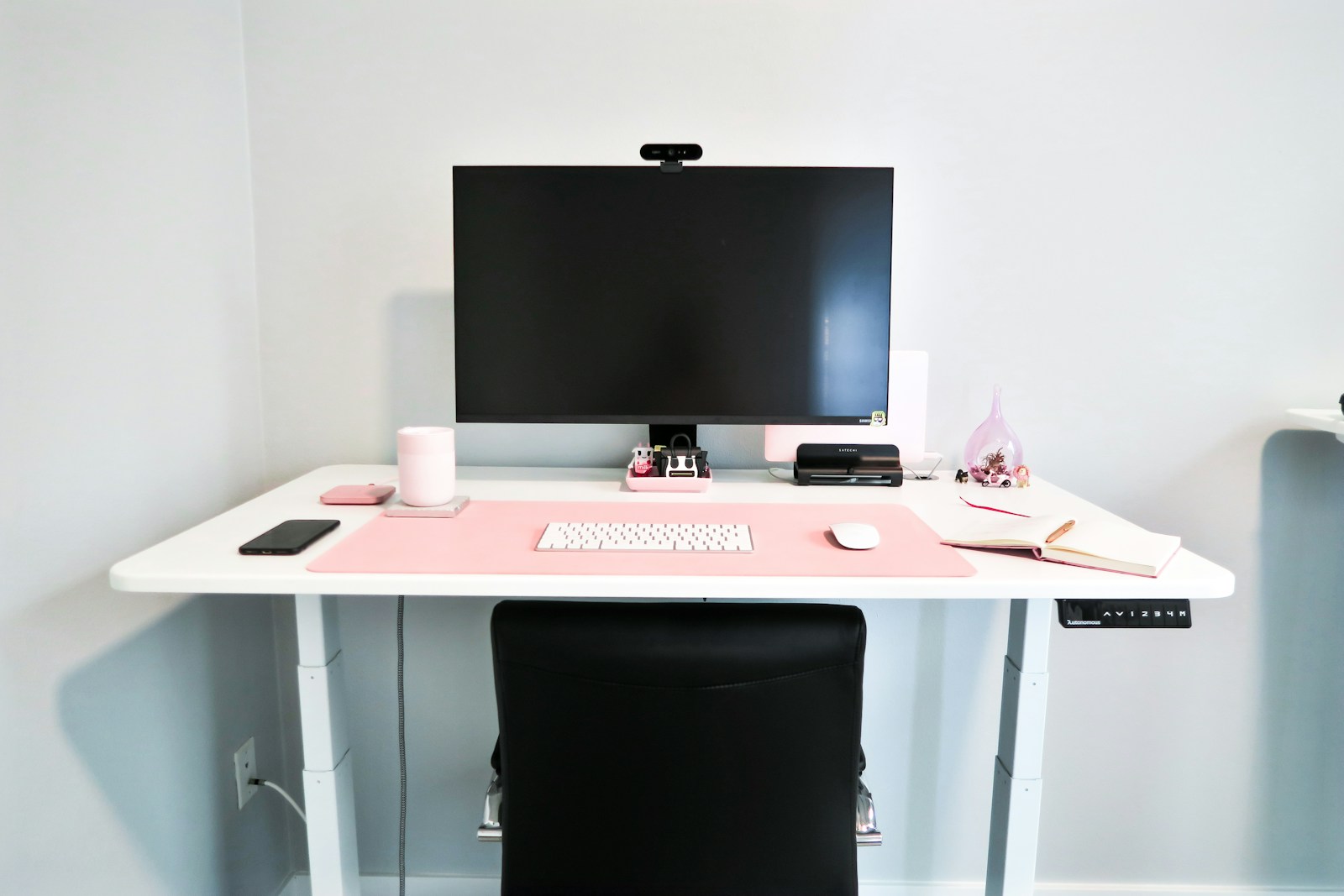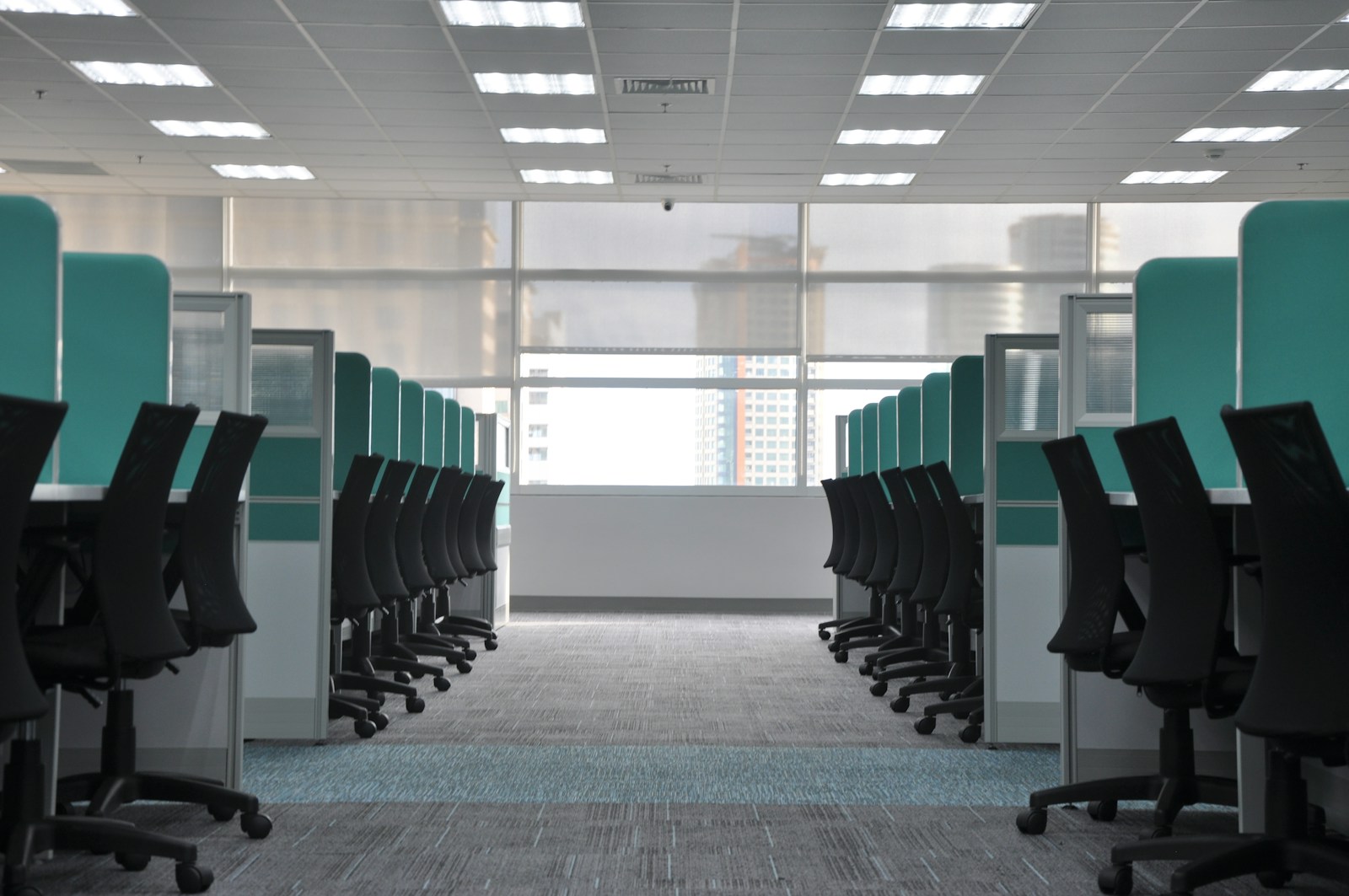From Cluttered to Clean: The Best Computer Tables for an Organized Workspace
Ever noticed how a messy desk seems to create a messy mind? You’re not alone. The average professional wastes nearly 4.3 hours per week searching for misplaced items in a disorganized workspace. That’s more than 200 hours per year of lost productivity! 😱 In today’s fast-paced digital world, your computer table isn’t just furniture—it’s the command center of your professional and personal life.
A thoughtfully organized computer table does more than just look appealing; it significantly reduces anxiety, enhances concentration, improves your professional image, and can boost productivity by up to 35%. Whether you’re working from home or in an office, the foundation of workspace efficiency begins with selecting the right computer table and implementing strategic organization systems. The good news? Creating and maintaining an organized workspace doesn’t require complex solutions—just intentional choices and consistent habits. ✨
In this comprehensive guide, we’ll walk you through everything from choosing the perfect computer table for your needs to implementing the complete desk reset method, mastering cable management, creating paper Flow systems, along with the personalization of your space, while ensuring organization. By the time you finish reading, you’ll have all the tools needed to transform your cluttered workspace into a productivity powerhouse that works for you, not against you.
Understanding the Impact of Workspace Organization
How clutter reduces productivity and increases stress
According to psychological research, clutter significantly impedes productivity and increases stress levels in the workplace. As highlighted in Marie Kondo’s “The Life-Changing Magic of Tidying Up,” clutter competes for our attention, creating a constant source of distraction that diverts focus from important tasks. When your computer table is overflowing with random items, documents, and cables, your brain must work harder to filter out these visual distractions, depleting valuable mental resources that could be better used for creative thinking and problem-solving.
Studies from the Personality and Social Psychology Bulletin reinforce this concept, demonstrating a clear correlation between cluttered environments and elevated stress hormones. This increased stress not only affects your immediate performance but can contribute to long-term job dissatisfaction and burnout—especially relevant for those spending long hours at computer workstations.
Key benefits of a well-organized computer table
A well-organized computer desk offers numerous benefits that have a direct effect on the quality and efficiency of your work. First, it significantly improves focus by eliminating distractions and allowing for greater concentration on tasks at hand. The structured environment creates a system where everything has its designated place, reducing time wasted searching for items and enabling smoother workflow transitions.
In workplace settings, organization contributes to better overall employee well-being. As noted in research by Fellowes, 87% of employees express desire for healthier workplace benefits, including well-designed workspaces. Tech industry workers particularly value thoughtfully organized environments that support their productivity needs.
Well-designed workspaces also incorporate ergonomic principles that reduce physical strain, supporting both physical health and cognitive function during extended computer work sessions.
The psychological effects of a clean workspace on creativity and job satisfaction
The state of your workspace has profound psychological impacts that extend beyond mere productivity. A clean, organized computer table creates an environment that fosters creativity and enhances overall job satisfaction. When your workspace feels ordered and purposeful, it creates a sense of control and accomplishment that positively influences your mindset before you even begin working.
Personal testimonials from professionals like Mark and Samantha illustrate this effect, with many reporting that organized workspaces help trigger “flow states” where creativity and problem-solving abilities are heightened. This psychological benefit stems from reduced cognitive load—when your brain isn’t constantly processing disorder, it has more capacity for innovative thinking.
The WELL Building Standard recognizes the importance of workspace design on mental health, incorporating “Mind” as one of its seven key concepts. This international benchmark acknowledges that thoughtfully designed work environments directly contribute to improved employee satisfaction and performance.
With these psychological and productivity benefits in mind, our next section will explore “Choosing the Right Computer Table for Your Needs”—the critical foundation for creating your optimally organized workspace.
Choosing the Right Computer Table for Your Needs
A. Essential features to look for in a quality computer table
Ever noticed how some computer tables just feel right while others make you want to scream? The difference is in the details.
First up, stability is non-negotiable. A wobbly table is the enemy of productivity. Look for tables with solid construction, sturdy legs, and quality materials that won’t bend under the weight of your equipment.
Ergonomics matter more than you might think. Your table ought to feature adjustable height options, allowing you to alternate between sitting and standing. The ideal desk height should allow your arms to rest at 90 degrees when typing.
Cable management is something you’ll thank yourself for later. Built-in grommets, cable trays, or channels keep those annoying cords from turning into a tangled mess across your workspace.
Material choice affects both durability and style. Glass tops look sleek but show fingerprints. Wood provides a sense of warmth; however, it may necessitate additional maintenance. Laminate surfaces provide a good balance of durability and affordability.
A good warranty speaks volumes about quality. Manufacturers who stand behind their products typically offer at least 2-5 years of coverage.
B. Size and space considerations for your specific environment
Got a tiny apartment? Or maybe a dedicated home office? Size matters—big time.
Standard computer desks generally vary in width from 48 to 72 inches. For small spaces, consider compact options around 40 inches or less. Remember to account for chair movement space (about 3-4 feet behind your desk).
Depth is crucial but often overlooked. You need at least 24 inches to accommodate monitors at a comfortable viewing distance. Gaming or multi-monitor setups? Go for 30+ inches.
Corner desks and L-shaped options maximize awkward spaces, giving you more surface area without hogging the center of your room.
Height clearance matters too—especially for standing desks. Make sure you have enough vertical space if you’re planning to adjust heights throughout the day.
Please remember to take measurements of doorways and stairwells prior to placing your order! Nothing’s worse than a perfect desk that can’t make it into your office.
C. Storage options and organizational compartments
The secret to maintaining that Instagram-worthy clean desk? Smart storage.
Drawers are classics for a reason. Deep drawers work for larger items while shallow ones keep smaller supplies organized and accessible. Look for smooth gliders with soft-close mechanisms.
Overhead shelving adds vertical storage without increasing your desk footprint. Perfect for reference materials, decorative items, or equipment you don’t use daily.
Keyboard trays free up valuable desk surface and improve ergonomics by positioning your typing at the right height.
Built-in cable organizers are game-changers. Some premium desks include power strips, USB hubs, and wireless charging pads integrated directly into the design.
Monitor risers with storage underneath create space for notebooks or tablets while bringing your screen to eye level.
For minimalists, consider modular systems that let you add or remove storage components as your needs change. Start simple and expand when necessary.
The Complete Desk Reset Method
Now that we’ve explored how to choose the right computer table for your needs, it’s time to discuss how to transform that new or existing desk into a perfectly organized workspace. The complete desk reset method is a systematic approach to establishing a clean, functional foundation for your productivity.
Starting with a Clean Slate: The Total Desk Clearing Technique
The first step in resetting your desk is to completely clear everything off your workspace. Similar to how standing desks need a fresh start when they malfunction, your computer table benefits from a total reset. Remove all items—computers, peripherals, papers, decorations, and even your coffee mug. This fresh start method enables you to assess your workspace impartially and create a more deliberate organizational system.
Before beginning this process, ensure you have enough time to complete it without rushing. Just as you would remove all objects from beneath a standing desk before initiating a reset procedure, clear the surrounding area to give yourself ample space to sort through desk items.
Evaluating and Sorting Your Desk Items Effectively
Once your desk is completely empty, it’s time to sort through everything you removed. Create distinct categories:
- Essential daily tools: Items you use every day (computer, keyboard, mouse)
- Frequently used items: Things you need several times per week
- Occasional use items: Objects needed only periodically
- Rarely used items: Things that could be stored elsewhere
- Unnecessary items: Things to discard or relocate permanently
This sorting process resembles troubleshooting a malfunctioning desk—you’re identifying what’s essential, what’s causing “friction” in your workspace, and what’s simply creating unnecessary clutter. Just as you would check for excess weight or obstructions on a standing desk, examine what might be weighing down your productivity.
Cleaning Procedures for a Fresh Workspace Foundation
Before returning items to your desk, thoroughly clean all surfaces. This stage is essential for both aesthetic and practical purposes. Dust can accumulate in keyboard crevices and around electronic components, potentially causing issues similar to how loose wires or overheating can impede standing desk functionality.
Pay special attention to:
- Surface cleaning: Wipe down the entire desktop with appropriate cleaners
- Edge and leg cleaning: Don’t forget the underside and structural components
- Electronic maintenance: Carefully clean your computer equipment while it’s accessible
- Cable inspection: Check for frayed or damaged cables that need replacement
This thorough cleaning process creates a fresh foundation for your reorganized workspace, similar to how a proper reset establishes optimal functionality for a standing desk.
With your desk now reset to its optimal state, we’ll move on to implementing strategic organization systems for your computer table that will help maintain this newfound order and maximize your productivity.
Strategic Organization Systems for 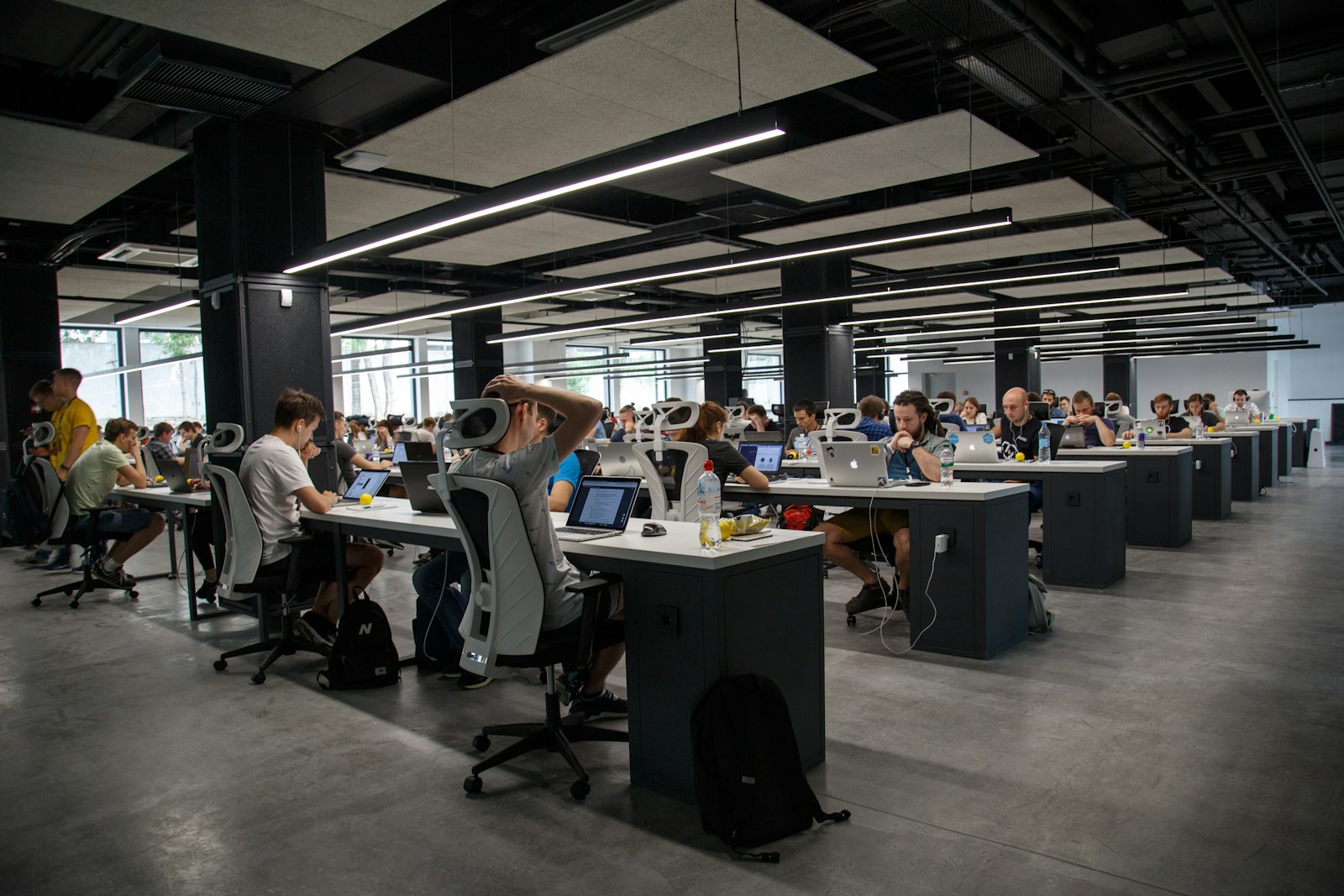
Now that we’ve covered the Complete Desk Reset Method, it’s time to implement strategic organization systems that will keep your computer table functioning efficiently for the long term. Having cleared your workspace, let’s look at how to organize it in a way that promotes productivity while maintaining order.
The Zone Method: Creating designated areas for different activities
The Zone Method involves dividing your computer table into specific areas dedicated to different tasks. This approach helps minimize clutter and increases efficiency by ensuring everything has its place. For example, you might create:
- A central zone for your computer and daily essentials
- A reference zone for documents you frequently access
- A supply zone where organizing tools like the Marbrasse Multi-Functional Desk Organizer ($10) can store your pens, sticky notes, and other small items in its compact design with top tray, notebook holder, and drawers
- A project zone for current work that requires immediate attention
The Bigso Boden Desktop Organizer ($19) works excellently for creating dedicated zones, as its five-piece set can be arranged to suit your specific workflow needs. For those who prefer a cleaner aesthetic, the My Space Organizers Clear Acrylic Desk Organizer ($30) with nine compartments allows you to create visible zones while maintaining a sleek appearance.
Smart supply management: Daily vs. occasional use items
A key principle of maintaining an organized computer table is distinguishing between items you use daily and those you need only occasionally.
Daily use items should be kept within arm’s reach in easily accessible organizers:
- The Threshold Caddy Set Organizer ($25) with its four flexible caddies is perfect for arranging frequently used supplies that need to be moved around
- The Missionmax Bamboo Wood Desk Organizer ($40) offers ten compartments for comprehensive organization of daily essentials while adding a sustainable touch to your workspace
Occasional use items should be stored away from your primary workspace:
- The Samstar Letter Tray Paper Organizer ($21) with its five-tier shelf system can house reference materials and documents needed less frequently
- The Kirigen Wood Letter-Size Tray ($20) provides durable storage for papers you need to keep accessible but not necessarily front and center
Vertical storage solutions to maximize limited space
When dealing with limited desk real estate, thinking vertically becomes essential:
- The Ktrio Acrylic File Holder ($21) offers vertical document storage, keeping important papers organized and accessible without consuming valuable desk space
- The Jerry & Maggie Desktop Organizer ($21) functions as a decorative bookshelf organizer that can be placed on your desk to provide multiple levels of storage
- The Easypag Wall File Organizer ($21) takes organization completely off your desk surface, utilizing wall space to keep papers organized and within reach
For drawers within your computer table, vertical organization is equally important:
- The Marie Kondo Hikidashi Bamboo Drawer Organizers ($35) provide modular options to maximize drawer space
- The Martha Stewart Kerry Plastic Drawer Organizers ($17) combine style with functionality for organized storage
- The Smartake 13-Piece Drawer Organizers ($17) and Simple Houseware Drawer Organizer Tray ($14) offer adjustable compartments to customize your storage solutions
With these strategic organization systems in place, your computer table will remain functional and clutter-free. In the next section, we’ll address one of the most common sources of desk disarray: Cable Management Solutions, which will further enhance the organization of your workspace.
Cable Management Solutions
Now that we’ve established strategic organization systems for your computer table, it’s time to tackle one of the most visually disruptive elements of any workspace: cable clutter. A well-organized desk can quickly be undermined by a tangled mess of wires, so let’s explore how to keep those cables under control.
Best practices for organizing computer and peripheral cables
The most effective approach to cable management starts with a clean slate. Begin by disconnecting all peripherals and surge protectors, allowing yourself to work with a blank canvas. Once everything is unplugged, strategically position your power strip in one of three recommended locations:
- Mount it underneath your desk for optimal concealment
- Place it on the floor where it remains out of sight
- Utilize a cable management box for minimal desk setups
Next, add dedicated cable management features to your workspace. Install compartments or raceways that attach to the underside of your desk to guide cables where you want them. For a more permanent solution, consider drilling holes in your desk for cables to pass through, using grommets for a finished look.
Consider mounting your monitors as part of your cable management strategy. Wall mounts offer a clean, minimalist appearance, while monitor arms provide flexibility with built-in cable management channels. When reconnecting your peripherals, utilize these management features to hide and guide wires in an organized fashion.
Finally, secure any loose cables with clips and ties to maintain a neat appearance. While perfect cable management can be challenging, the effort results in a visually pleasing and organized workspace.
Products and tools for eliminating cable clutter
There are four main categories of cable management accessories to consider:
Cable Holders:
- Elago Magnetic Cable Management Buttons: Affordable and magnetic, though limited to holding three cables
- Twelve South Cable Snap Stay: Offers a premium feel but at a higher price point
Cable Ties or Clips:
- SimpleCord Cable Management Ties: Ideal for bundling cables together
- Flixall Twist Ties: Perfect for storage or travel
- Blue Key World Cable Clips: Flexible and affordable, though less neat for multiple cables
Cable Sleeves:
- Alex Tech Cable Sleeve: Groups multiple cables together to reduce visible clutter
Cable Boxes:
- Chouky Cable Management Box: Conceals power strips and excess wiring for a cleaner desk appearance
Each product category serves a specific purpose in your cable management strategy. Cable holders keep charging cables accessible on your desk surface, while ties and clips bundle cables tightly together. Sleeves group multiple cables into a single unit, and boxes hide power strips and excess cabling completely.
Wireless alternatives to reduce cable congestion
While proper cable management greatly improves workspace organization, wireless peripherals offer an excellent way to minimize cable clutter from the start. By eliminating physical connections, wireless keyboards, mice, headphones, and even monitors can significantly reduce the number of cables you need to manage.
With your cables now neatly organized and out of sight, we can move on to addressing another common source of desk clutter. In the next section on Paper Flow Management, we’ll explore strategies to keep documents organized and accessible without creating visual chaos in your workspace.
Paper Flow Management
Now that we’ve addressed cable management solutions to keep your digital connections in order, let’s tackle another common workspace challenge: paper clutter. Even in our increasingly digital world, managing physical documents remains essential for an organized computer table.
Creating efficient systems for document processing
Maintaining an organized paper flow begins with establishing a clear system for processing documents. Just as with desk organizers for office supplies, creating designated spaces for different types of documents helps maintain order and efficiency. When documents have specific “homes,” you’re less likely to misplace important papers or create overwhelming stacks.
For optimal paper processing, prioritize frequently used documents by keeping them within easy reach. Develop the habit of immediately sorting incoming papers rather than allowing them to accumulate. This approach mirrors the organizational principles we discussed with desk storage solutions—balancing accessibility with maintaining a clutter-free environment.
Using trays and organizers for incoming and outgoing materials
Desk organizers aren’t just for pens and paper clips—they’re equally valuable for document management. Consider implementing a simple three-tray system:
- An “incoming” tray for new documents requiring attention
- A “processing” tray for items you’re currently working on
- An “outgoing” tray for completed items
This system provides clear visual cues about document status while preventing papers from sprawling across your workspace. When selecting document trays, apply the same principles used for other desk storage: balance form and function, ensuring they complement your workspace aesthetically while adequately accommodating your document volume.
Drawer dividers can further enhance your paper organization system, creating dedicated sections for different document categories. Labeling these sections ensures consistency and makes it easier to maintain your system over time.
Digital alternatives to reduce physical paper clutter
One of the most effective strategies for reducing paper clutter is minimizing how much physical paper enters your workspace in the first place. Consider digital alternatives for traditionally paper-heavy processes:
- Scan important documents to create digital archives
- Opt for electronic statements and bills
- Use digital note-taking applications instead of physical notebooks
- Implement electronic signature tools for documents requiring signatures
This approach aligns with creating a productive workspace by reducing physical clutter while maintaining efficient information management. Digital systems can provide the organizational benefits of physical systems without consuming valuable desk space.
With your paper management system established, you’ll now have more freedom to focus on personalizing your workspace while maintaining the organizational systems we’ve discussed.
Personalizing Your Workspace While Maintaining Order
Now that we’ve covered effective paper flow management strategies, let’s explore how to add personal touches to your computer table without sacrificing the organization you’ve worked so hard to achieve. A personalized workspace can significantly enhance your productivity and well-being while maintaining functionality.
Balancing Decoration with Functionality
The evolution of workspaces has shifted from standardized cubicles with limited personalization to more flexible environments that encourage individual expression. When personalizing your computer table:
- Adopt a minimalist modern approach by incorporating only essential decorative elements that serve a purpose
- Consider ergonomic accessories that reflect your style while enhancing comfort
- Use natural materials and stylish organizational tools that complement your aesthetic
- Select a cohesive color scheme that promotes focus while expressing your personality
For small spaces, choose compact decorative items that don’t overwhelm your surface area. The key is finding balance—a workspace that feels uniquely yours without compromising efficiency.
Strategic Placement of Personal Items
Thoughtful positioning of personal items prevents clutter while creating an inspiring environment:
- Designate specific zones for decorative elements, keeping primary work areas clear
- Position personal photos or mementos at eye level along the periphery of your workspace
- Utilize vertical space with wall-mounted shelves for displaying items without consuming desk space
- Consider dual-purpose items that offer both functionality and personal expression
For tech enthusiasts, incorporate ambient lighting that enhances both mood and visibility. Those with creative workspaces might position inspirational objects within view but outside their immediate work zone.
Inspirational Elements That Don’t Contribute to Clutter
Adding motivation to your space doesn’t require sacrificing organization:
- Integrate greenery with small, low-maintenance plants that improve air quality and aesthetics
- Use motivational decor that adheres to walls or monitors rather than consuming table space
- Consider digital inspiration boards instead of physical ones to eliminate paper clutter
- Incorporate ambient elements like soft lighting or background music that personalize without physical presence
For those with bright and inviting workspaces, strategically placed colorful elements can energize without overwhelming. Technology enthusiasts might prefer customizable smart devices that adjust to preferences while maintaining a clean aesthetic.
With your workspace now personalized while maintaining order, the next step is establishing routines for maintaining your organized computer table. Consistent maintenance will ensure your newly designed space remains functional and inspiring for the long term.
Maintaining Your Organized Computer Table
Now that we’ve covered how to personalize your workspace while maintaining order, let’s focus on keeping that organization sustainable long-term. After all, creating an organized computer table is only half the battle—maintaining it is what truly matters for continued productivity.
Daily Five-Minute Organization Routines
Implementing a quick daily routine can prevent clutter from accumulating on your computer table:
- End-of-day cleanup: Take five minutes before leaving your workspace to clear away any trash, papers, or items that don’t belong. As mentioned in our reference material, “Clean Before Leaving” ensures you return to a tidy workspace the next day, fostering a fresh start.
- Immediate disposal: Keep a trash can within arm’s reach so you can immediately discard waste rather than letting it accumulate on your desk. Remember the principle: “Avoid Setting Trash Down” on the desk to promote the habit of immediate disposal.
- Quick paper sorting: Spend a minute organizing any new documents into your designated physical inbox. This prevents scattered papers and maintains order without requiring significant time investment.
Weekly Maintenance Procedures
In addition to daily habits, set aside time each week for more thorough organization:
- Scheduled cleaning time: Block 15-30 minutes on your calendar each week for desk maintenance. Regular, scheduled cleaning makes tidying up a habitual, quick task rather than a daunting chore.
- Digital decluttering: Review and scan any paper documents that accumulated during the week. Converting physical clutter into digital format enhances organization while keeping your workspace clear.
- Cable management check: Inspect your cable management system weekly to ensure cords haven’t become tangled or disorganized. If necessary, use Velcro ties to secure any loose cables.
- Equipment positioning: Verify that your main equipment remains ergonomically positioned. Proper placement of keyboards, monitors, and other devices prevents injury and ensures continued comfort.
Adapting Organization Systems During Busy Periods
Even the most organized professionals encounter difficulties during busy periods:
- Prioritize the essentials: During busy periods, focus on maintaining only the most critical organization systems—like immediate trash disposal and end-of-day basic cleanup.
- Utilize your inbox system: When time is limited, rely heavily on your designated physical inbox to temporarily hold documents until you can properly sort them.
- Apply the “When in Doubt, Throw It Out” principle: During high-pressure periods, be more aggressive about discarding unnecessary items rather than allowing them to create clutter.
- Quick resets: If your organization system becomes compromised during busy times, schedule a 30-minute “desk reset” following the thorough cleaning approach—removing everything, cleaning the surface, and strategically repositioning items.
By implementing these routines, you’ll maintain the organization of your computer table even during the most demanding periods, ensuring your workspace continues supporting your productivity rather than hindering it.
Transforming Your Work Environment
Your computer table is more than just a piece of furniture—it’s the foundation of your productivity and creativity. Throughout this guide, we’ve explored how selecting the right computer table, implementing strategic organization systems, managing cables and papers effectively, and personalizing your workspace can dramatically transform your work environment. From the Complete Desk Reset Method to thoughtful maintenance routines, these strategies can reduce anxiety, improve concentration, and boost job satisfaction by up to 35%.
It is important to recognize that keeping a tidy workspace is a continuous process rather than a singular task. By dedicating just a few minutes each day to tidying up and scheduling weekly organization sessions, you’ll prevent clutter from accumulating and preserve the efficiency of your workspace. Whether you’re working from home or in a traditional office, an organized computer table reflects your professionalism while supporting your well-being. Start implementing these strategies today, and experience the difference a clean, well-organized workspace can make in your daily productivity and peace of mind.
From Cluttered to Clean: The Best Computer Tables for an Organized Workspace
